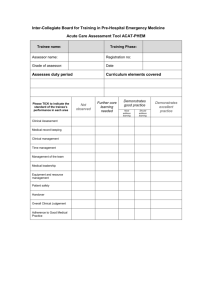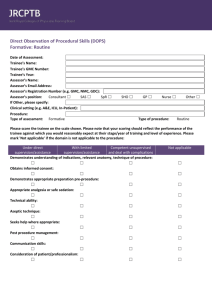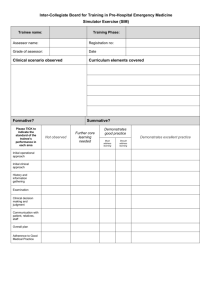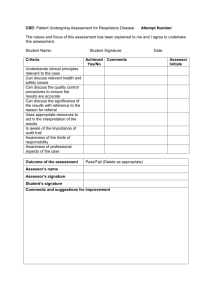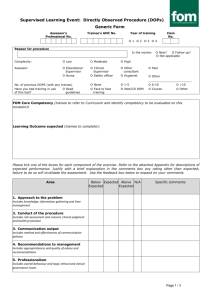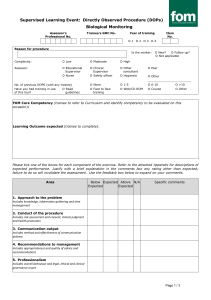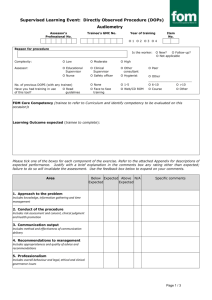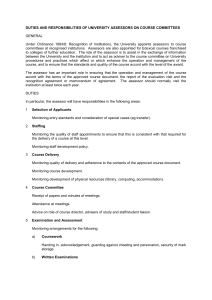Example 3
advertisement
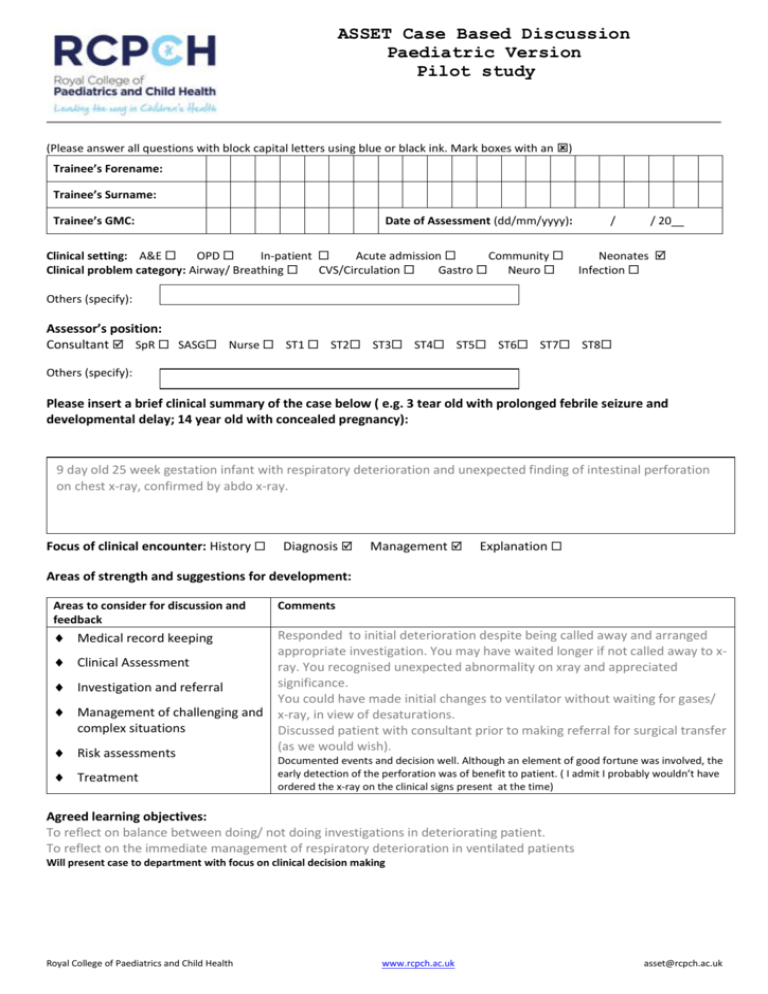
ASSET Case Based Discussion Paediatric Version Pilot study (Please answer all questions with block capital letters using blue or black ink. Mark boxes with an ) Trainee’s Forename: Trainee’s Surname: Trainee’s GMC: Date of Assessment (dd/mm/yyyy): Clinical setting: A&E OPD In-patient Acute admission Community Clinical problem category: Airway/ Breathing CVS/Circulation Gastro Neuro / / 20__ Neonates Infection Others (specify): Assessor’s position: Consultant SpR SASG Nurse ST1 ST2 ST3 ST4 ST5 ST6 ST7 ST8 Others (specify): Please insert a brief clinical summary of the case below ( e.g. 3 tear old with prolonged febrile seizure and developmental delay; 14 year old with concealed pregnancy): 9 day old 25 week gestation infant with respiratory deterioration and unexpected finding of intestinal perforation on chest x-ray, confirmed by abdo x-ray. Focus of clinical encounter: History Diagnosis Management Explanation Areas of strength and suggestions for development: Areas to consider for discussion and feedback Comments Medical record keeping Responded to initial deterioration despite being called away and arranged appropriate investigation. You may have waited longer if not called away to xray. You recognised unexpected abnormality on xray and appreciated significance. You could have made initial changes to ventilator without waiting for gases/ x-ray, in view of desaturations. Discussed patient with consultant prior to making referral for surgical transfer (as we would wish). Clinical Assessment Investigation and referral Management of challenging and complex situations Risk assessments Treatment Documented events and decision well. Although an element of good fortune was involved, the early detection of the perforation was of benefit to patient. ( I admit I probably wouldn’t have ordered the x-ray on the clinical signs present at the time) Agreed learning objectives: To reflect on balance between doing/ not doing investigations in deteriorating patient. To reflect on the immediate management of respiratory deterioration in ventilated patients Will present case to department with focus on clinical decision making Royal College of Paediatrics and Child Health www.rcpch.ac.uk asset@rcpch.ac.uk Please describe what you have learned from this case. How will it change your practice in the future? I was worried that I had missed some clues to the perforation, but after review of the patient I am relieved that there were no pointers towards GI problems (although these did develop over the next few hours before transfer). I also discovered some of the pitfalls around arranging transfers, although happily not caused by me. On the basis of this assessment do you have significant concerns which should be discussed with the educational supervisor? Assessor’s Full Name: Assessor’s Registration No. Assessor’s Signature:
